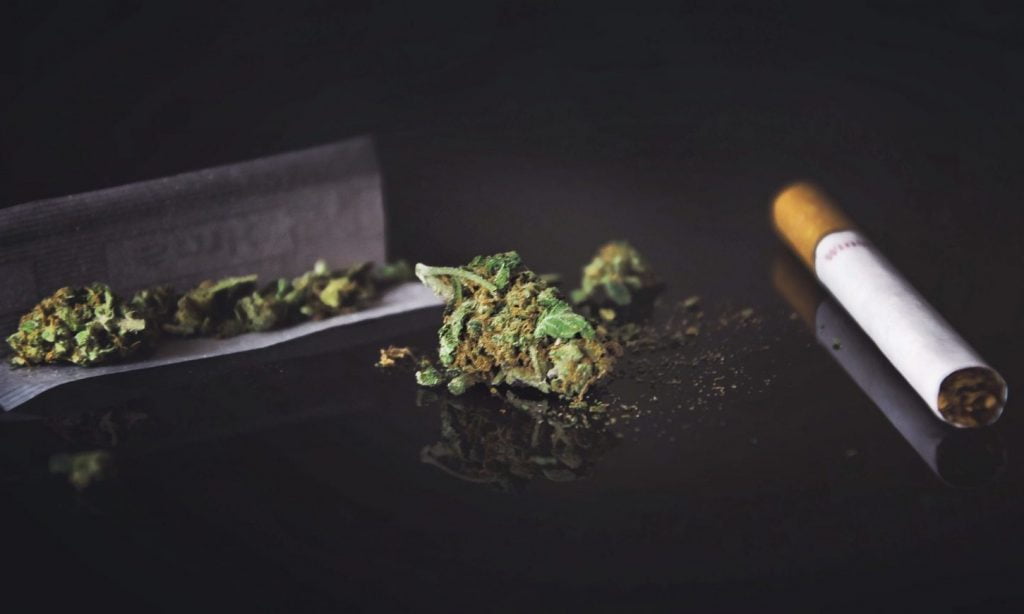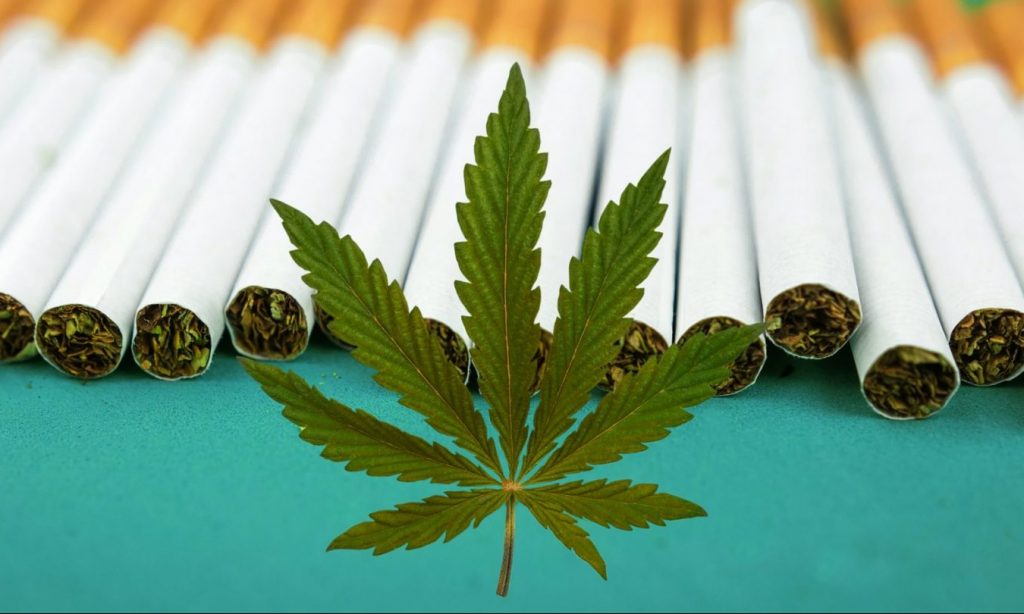
Tobacco vs. Cannabis: What To Expect In The Near Future
By Tia Moskalenko
In the past 30 years, the public perception of both the tobacco and cannabis industries has changed dramatically. Tobacco’s popularity has slowly declined while cannabis use (and acceptance) has increased.
But what does the future of these markets look like from a practical, legal and financial point of view? In this article, we’re going to discuss a little about the recent history of the tobacco and cannabis industry in the United States and speculate about future legal changes.
Photo by Lumppini / Getty Images
At the end of the day, which one will come out on top: tobacco or cannabis? By soliciting and analyzing the opinions of industry experts, we hope to get a good idea of how the future will answer this question.
A Recent History of the Tobacco and Cannabis Industry in the United States The Rise and Fall of Tobacco
Over the past 50 years, the number of tobacco smokers in the US population has decreased from 42% to 15%. (1) Tobacco consumption peaked in 1963 when smokers averaged 4,345 cigarettes per year. Although scientists knew about the health risks associated with inhaling tobacco smoke as early as the 1940s, tobacco companies did their best to bury these findings.
Indeed, it wasn’t until decades later that many doctors beat the drum on the subject, even though it was an accepted fact that smoking caused cancer in the late 1950s. (2) The tobacco lobby was mighty, and it wasn’t until the 1990s that sales really began to decline. People finally understood that they were risking their health and life to no avail.
Even now, the delivery method has shifted a bit to suit a younger generation. While cigarettes are on the decline, vapes have hit the market … just another way for tobacco to get its last breath.
The fall and rise of cannabis
The cannabis industry has taken an almost completely opposite path over the years. In the early years of the original colonies, many farmers (including George Washington) grew cannabis on their land. These plants were made into paper, cloth, ship sails and ropes. Doctors used cannabis in the 19th century to treat a variety of diseases, from cancer to epilepsy.
Then, at the beginning of the 20th century, there was a shift in public opinion about cannabis in the United States. Smoking cannabis was virtually unknown to much of the US population at the time … but small groups of Mexican immigrants did, and anti-Mexican sentiments began to spread. In Texas, law enforcement began to spread stories of violent crimes committed by cannabis smokers. The plant itself was increasingly referred to as “marijuana” as a scare tactic.
Government officials reiterated claims that marijuana was the drug of choice for minorities, jazz musicians and other “undesirables”. The film “Reefer Madness” (which later became a cult classic for stoners) was released. It followed the stories of “healthy American teenagers” captured by the evil of the drug and forced into sexual deviance, murder, and suicide.
RELATED: 3 Reasons Big Tobacco Could Take Over Legal Cannabis Sooner Than You Think
The DEA was founded and took action against cannabis by waging the “War on Drugs” under the Nixon administration. In 1969, only 12% of Americans thought marijuana should be legalized by the federal government. In the 1980s and early 1990s, marijuana continued to be widely denigrated as a “gateway drug” to harder substances. Then in 1996 things started looking for cannabis.
State cannabis legalization options
1996 was the year California legalized cannabis for medicinal purposes. More and more activists were promoting the health benefits of THC and CBD … and an increasingly wellness-seeking public began to listen. In 2019, 66% of the American public voted for cannabis legalization – an amazing leap in a short span of time.
As of 2019, the federal government has taken a fairly favorable step in this process by passing a bill to remove cannabis from the Controlled Substances Act, although no further action has been taken since then. Cannabis laws can be confusing as it is still illegal at the federal level, while individual states have the power to decide how its use is regulated by law within their borders.
 Photo by Hugo Cattelain / EyeEm / Getty Images
Photo by Hugo Cattelain / EyeEm / Getty Images
The 2018 Farm Bill made hemp production and sale legal at the federal level, although hemp laws vary from state to state. The laws are a bit fuzzy and difficult to see through, and can vary widely at the state level in a number of ways.
Medical cannabis use is legal in 36 states. 18 states allow recreational use of cannabis, while 13 states have decriminalized cannabis use overall. In the meantime, the FDA has started approving certain derived cannabis compounds for use in pharmaceuticals: THC in Marinol and Syndros and CBD in Epidiolex.
RELATED: Is Cannabis The Future For Big Tobacco?
While cannabis legalization is inevitable in the US, it is still moving slowly. This is due to a large contingent of senior Republican lawmakers who continue to hold onto an inherent bias towards the work.
As the country moves slowly forward, experts believe that the most likely scenario is that more states are enacting medical or recreational laws while the federal government continues with decriminalization and deletion. It’s essentially a waiting game as the old guard of more conservative lawmakers die.
The Cannabis Market vs. Tobacco Market: What’s Next?
As the market opens up for both THC and CBD products (not to mention a host of other exciting new cannabinoids), profits in this industry are expected to boom. The bigger question for many experts is whether or not large companies can be prevented from dominating the market with cheap, generic cannabis products.
RELATED: Why Do British Insist on Confusing Cannabis for Tobacco?
However, Concordia University law professor Ryan Stoa believes this is not a problem given the variety of varieties available. He continued, “When it comes to the size of regulators, states have a role to play. You already see that states like California limit or limit the size of marijuana farms, essentially saying, “If we are to legalize this industry, we want to distribute the benefits among as many people as possible.” Other states are able to replicate this model. ‘”
 Photo by Lumppini / Getty Images
Photo by Lumppini / Getty Images
Now marijuana is big money – and money talk in the United States. The marijuana industry raised $ 116.8 billion in 2019, according to Viridian Capital Advisors. This is expected to increase as more states begin to lift cannabis bans.
A surprising harbinger of the tobacco future
Whether cannabis will overtake big tobacco has an interesting story that shows which direction the wind is blowing from. In the conservative state of Kentucky, a place where state lobbyists have consistently opposed offers of legalization, hemp farmers have built a tremendous movement.
Indeed, tobacco farmers are beginning to convert part of their land from tobacco to hemp crops. A great third generation tobacco farmer, Shack Newman, said, “Tobacco is, I’m not going to say it’s on the way out, but it definitely seems to be.” He went on to say that growing hemp is far less is labor intensive.
Experts watching the situation speculate that hemp may overtake tobacco in the near future. And that is just the beginning. As tobacco sales continue to decline and research backing the health claims behind cannabis compounds increases, the country is moving towards the dawn of a booming new industry – one that is set to overtake the once thriving tobacco trade.
This article originally appeared on Benzinga and was republished with permission.

Post a comment: